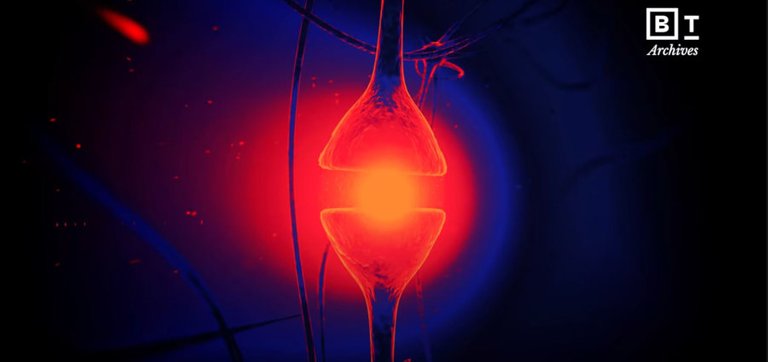Is Blue Real?
The short answer is no. And yes. It's confusing. You see, none of the colors we perceive are real. There's only light, which is a subset of visible frequencies of electromagnetic waves. And our brains interpret these wavelengths as color sensation...

source: YouTube
In fact, we can't see reality as it is. I've written extensively about this fact in many previous posts, but the one you should read is Nothing's Real! from two months ago, in which is explained how even spacetime is likely to be nothing more than a construct produced in our brains. It also explains how it's a good thing we can't see reality in its raw form, and how this fact is tied to our evolution and survival. Today's short post is about how color, how we see color is purely based on our past experiences as individuals and as societies. This might come as a surprise, but There's Evidence Humans Didn't Actually See Blue Until Modern Times. In the article behind the link it's noted that in the "Odyssey", Homer didn't describe the ocean as blue, but as "wine dark," and that ancient Icelandic, Hindu, Chinese, Arabic, and Hebrew texts didn't mention the word blue.
Water has a blueish hue and the sky is blue as well, so it's a rather prominent color on planet Earth. But in nature the color blue is rare. Less than 1 in 10 plants have blue flowers and far fewer animals are blue. So why is that? The color of a pigment is defined by the colors it absorbs and reflects. Here's why plants don't usually reflect blue light:
Pigments appear the colour of the light they don’t absorb, but instead reflect. The most common plant pigment is green chlorophyll, so plants appear green because chlorophyll doesn’t absorb, but rather reflects, green light. Plants however like blue light as it has more energy than any other light in the visible spectrum.
So, if you have blue leaves you are reflecting the highest energy light and relegating yourself to using only poorer quality light that ultimately limits your growth. Not a good strategy and so why most plants avoid it.
source: University of Adelaide
It seems that humans could see blue only after they invented a word for it, and after the Egyptians first made a blue dye around 2200 B.C. I already said that how we see colors is related on our individual and collective past experiences, and we can see this for ourselves by training our brains for a couple of seconds. Sounds unbelievable? Just try it: in the article Do you see what I see? on BBC's website there's a little experiment to try for yourself under the heading "Colour memories," where you'll see the colors in two identical images differently after concentrating for a minute on another image. It's just one of thousands of visual illusions our brains are unable to prevent or escape, which should be further proof that we can only interpret reality and are simply not able to see it as it is. Mind you, that isn't an invitation to conclude that reality is purely individual, or that reality doesn't exist...
The best evidence that humans probably didn't see blue for thousands of years is delivered by an experiment done in 2006 by Jules Davidoff:
Davidoff and his team worked with the Himba tribe from Namibia. In their language, there is no word for blue and no real distinction between green and blue.
To test whether that meant they couldn't actually see blue, he showed members of the tribe a circle with 11 green squares and one obviously blue square.
But the Himba tribe struggled to tell Davidoff which of the squares was a different colour to the others.
Those who did hazard a guess at which square was different took a long time to get the right answer, and there were a lot of mistakes.
But, interestingly, the Himba have lots more words for green than we do.
So to reverse the experiment, Davidoff showed English speakers this same circle experiment with 11 squares of one shade of green, and then one odd square of a different shade.
...it's pretty tough for us to distinguish which square is different. In fact, I really can't see any differences at all.
The Himba tribe, on the other hand, could spot the odd square out straight away.
source: ScienceAlert
Like I said, it's confusing. But it's also wonderful and should remind all of us what a miracle it is to be alive and to be human. We should cherish this life we have and stop squandering the wealth given to us by 13.7 billion years of evolution, even though we realize that space and time are relative and conjured up by our brains' interpretation of sensory information. The new Matrix film has released and I'm going to watch it, if we're allowed, with some friends next week, and who knows, maybe THIS is the Matrix...
Is reality real? These neuroscientists don’t think so | Big Think
Thanks so much for visiting my blog and reading my posts dear reader, I appreciate that a lot :-) If you like my content, please consider leaving a comment, upvote or resteem. I'll be back here tomorrow and sincerely hope you'll join me. Until then, stay safe, stay healthy!

Recent articles you might be interested in:
| Latest article >>>>>>>>>>> | 2022 Crypto Forecast |
|---|---|
| Big Quit | Surveillance Capitalism |
| Cry Africa | Work Or Die! |
| Cornerstone | Unreal |

Thanks for stopping by and reading. If you really liked this content, if you disagree (or if you do agree), please leave a comment. Of course, upvotes, follows, resteems are all greatly appreciated, but nothing brings me and you more growth than sharing our ideas.